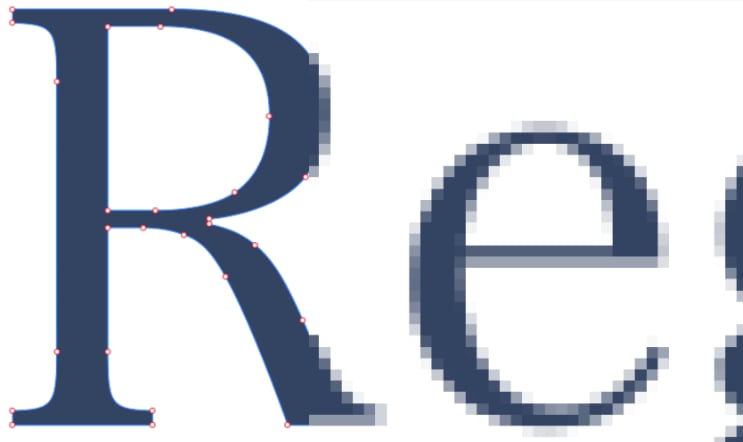The differing approaches to encoding an image as a bitmap or vector result in different properties, advantages, disadvantages, and applications. These are shown in the table below.
| Bitmap graphics | Vector graphics |
| Suitable for photographs, scans, and images with continuous tones. | Suitable for line drawing, diagrams, logos, and other images that use blocks of colour and geometric shapes. |
| Quality degrades when image is enlarged or user zooms in, as pixels become noticeable (the image becomes pixelated). | Quality remains perfect when image is enlarged, as the shapes are simply rendered again at the new size. A vector image can be printed and displayed at any size, with full accuracy and quality. |
| File size is larger than an equivalent vector image. | Smaller file size than equivalent bitmap image, as long as the image is suitable to be encoded as a vector. This is because the vector format only stores data about shapes, rather than needing to store the colour of every pixel in the final image. |
| Bitmap images are suitable for compression. | Vector images can be compressed, but they are already encoded in a very minimalistic format and compression will not result in a noticeable reduction in file size. |
| Bitmap graphics is simple to render (display or print), as the computer only needs to read and display/print the pixel data. | Vector graphics must be interpreted by the computer and each pixel must be rendered from scratch before it can be displayed/printed, which is a more complex process requiring more processing power. |
| Bitmap images do not store layers or separate objects; everything is flattened down into a raster of pixels upon saving. | Vector images include layer data and all shapes are kept separate, allowing for editing later. |
